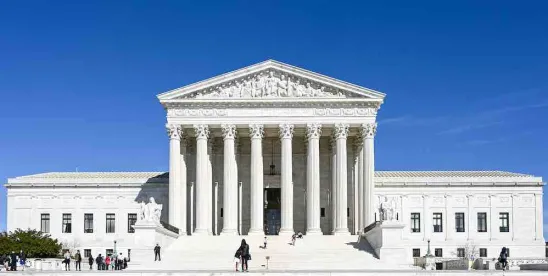On June 28, 2024, the United States Supreme Court upended decades of precedent by overturning the Chevron doctrine in the combined cases of Loper Bright Enterprises v. Raimondo and Relentless Inc. v. Department of Commerce (Case Nos. 22-451 and 22-1219). For nearly 40 years, a doctrine established by the 1984 Supreme Court decision Chevron v. Natural Resources Defense Council has dictated the framework used by the judiciary when reviewing how federal agencies interpret statutes. Essentially, under Chevron, when a federal statute is silent or ambiguous about a particular regulatory issue, courts must defer to the implementing agency’s reasonable interpretation of the law. This deferential standard of review has led to extensive criticism over the years, often based on the argument that Chevron vests quasi-legislative powers in unelected regulators and places regulatory interpretations of statutes beyond judicial review. In some instances, commentators have argued that regulators have even gone so far as to expand the scope of their own authority by adopting broad interpretations of allegedly ambiguous regulatory scope granted by Congress. However, the Supreme Court’s most recent decision entirely overrules the Chevron doctrine, holding that judges, and not federal agencies, are responsible for resolving statutory ambiguities. Although an agency interpretation may inform a reviewing court’s analysis, today’s decision eliminates the requirement that a court must defer to agency’s interpretation of a statute. Importantly, it also leaves in place prior agency determinations that were adjudicated and upheld under Chevron. At least in the near term, stakeholders in regulated industries should expect an influx of litigation and uncertainty regarding agency statutory interpretations.
CHEVRON V. NRDC AND THE CHEVRON DOCTRINE
Chevron v. Natural Resources Defense Council (Chevron) established the previous level of deference granted to federal agency interpretations of statutes. The case addressed a regulation promulgated by the Environmental Protection Agency (EPA), which interpreted a reference to “stationary source” in the federal Clean Air Act as grouping all pollution-emitting devices at the same facility into a single “bubble.” Environmental groups brought suit to dispute the EPA’s “bubble” interpretation, instead favoring an interpretation which treated each polluting device as a separate stationary source. The Supreme Court ultimately held that the EPA’s “bubble” definition was a permissible interpretation of the term “stationary source,” reasoning that agencies with scientific and technical expertise are uniquely well-positioned to interpret ambiguous statutes in order to advance federally directed policy goals. Accordingly, the Supreme Court established a two-step test in its decision whereby judges must grant significant deference to agency interpretations when challenged in court.
At step one, the Chevron doctrine instructs the reviewing court to apply the “traditional tools of statutory construction” to determine if “Congress has directly spoken to the precise question at issue.” If the meaning is clear from the language of the statute, then the court must effectuate Congress’ intent. However, if the statute is silent or ambiguous with respect to the particular issue, the court proceeds to step two. At step two, the court will uphold the agency’s interpretation so long as it is based on a “permissible construction of the statute” regardless of whether the court agrees with that interpretation.
The question of whether federal agencies or the courts are best positioned to interpret ambiguous legislation may, at first blush, appear technical and immaterial, but the practical implications of this dichotomy are quite significant. Since administrations largely effectuate their policy goals through regulatory agencies, a world where Chevron deference is the rule often creates a certain level of volatility with each election cycle, and thus, associated uncertainty for regulated industries. A prominent example of this is the EPA’s continually shifting definition of “Waters of the United States” under the Clean Water Act throughout the previous three presidential administrations.
THE FISHERIES CASES
Background
The Supreme Court’s current opinion addresses the consolidated cases of Loper Bright Enterprises v. Raimondo and Relentless, Inc. v. Department of Commerce (referred to collectively as the Fisheries Cases). In these factually similar cases, two groups of commercial fishermen each individually challenged fishery regulations promulgated in 2020 by the National Marine Fisheries Service (NMFS) that interpreted a statutory provision of the Magnuson-Stevens Fisheries Conservation and Management Act (MSA).
As background, the MSA authorizes the creation of management plans to prevent the depletion of fisheries and/or to restore overharvested areas. These management plans utilize various approaches to obtain the “best scientific information available” about a specific threatened marine population in order to prevent overfishing. As part of the Atlantic Herring Management Plan, commercial fishermen operating within 200 nautical miles of the U.S. coastline are required to host federal observers on their vessels to collect data and monitor each fishery’s catch. The MSA is silent as to whom should bear the cost of this at-sea monitoring.
In 2020, NMFS (the federal agency charged with implementing the MSA) issued a new regulation requiring commercial fishers to pay the costs associated with the at-sea monitoring required under the Atlantic Herring Monitoring Plan. The Fisheries Cases commenced when two groups of fishermen brought suit to dispute this regulation. The fishermen argued that the cost of at-sea monitoring – up to $710 per day – was unduly burdensome and could reduce annual company returns by nearly 20%. Both the D.C. Circuit and First Circuit Courts of Appeal upheld NMFS’s interpretation of the MSA to be a reasonable and permissible interpretation of an ambiguous statute under the Chevron doctrine.
The Supreme Court granted certiorari, consolidated the Fisheries Cases, and heard their respective oral arguments consecutively on January 17, 2024. During oral argument, Justices Kagan, Sotomayor, and Jackson pronounced the merits of delegating policymaking authority to agency experts rather than judges and invoked stare decisis, while the remaining Justices opined on the ways the Chevron doctrine creates instability in the law as policy shifts with the changeover of each administration. Justice Gorsuch indicated his preference for a reversion to a pre-Chevron doctrine from Skidmore v. Swift & Co. Under the Skidmore doctrine, courts should afford deference to an agency’s interpretation only if the agency’s technical or scientific expertise on the matter is persuasive. Unlike Chevron, the Skidmore doctrine leaves final interpretive authority with courts.
Holding and Reasoning
Today’s Supreme Court 6-3 decision overruling Chevron relied in large part on finding that the doctrine is incompatible with the Administrative Procedure Act (APA). The Court held that the language of APA Section 706, which requires that a reviewing court decide “all relevant questions of law” regarding an agency action, could not be reconciled with Chevron’s command that a court should yield to an agency’s “permissible construction” of an ambiguous statute. The Court rejected the presumption that statutory ambiguities are implicit delegations of authority – a key argument underlying the Chevron doctrine – as a fiction. Resolving statutory ambiguity, the Court noted, is “emphatically the province and duty of the judicial department” and the APA codifies the “unremarkable, yet elemental proposition reflected by judicial practice dating back to Marbury: that courts decide legal questions by applying their own judgement.” (Opinion, p. 14.)
The Court also rejected familiar policy rationales that have long supported the Chevron doctrine. With respect to the argument that courts should defer to the technical expertise of agency officials when interpreting ambiguous statutes, the Court pointed out that in many instances no such comparative interpretational advantage exists. Even in those instances where an interpretive question is particularly technical, the Court observed that reviewing courts are aided by the parties and amici who are “steeped in the subject matter.” (Opinion, p. 25.) The Court dispensed with the argument that Chevron promotes the uniform construction of federal law as there is little value in such uniformity if those interpretations are incorrect. The Court also rejected the argument that “interpretation of ambiguous statutory provisions amounts to policymaking” best suited for the executive branch as “especially mistaken.” Where legal interpretation is required, statutes must be interpreted based on traditional tools of statutory construction and not executive branch policy preferences.
THE IMPLICATIONS OF OVERTURNING CHEVRON
Chevron has been a cornerstone of regulatory authority and administrative law for decades. As with all such long-standing and fundamental legal principles, the overturning of Chevron will have far-reaching consequences.
The Court attempted to limit the immediate impact of its decision by emphasizing that stare decisis still applies to prior cases that relied on the Chevron framework and that arguing a case was decided on “incorrect methodology” is “not enough” to justify overruling statutory precedent. Nevertheless, courts will likely experience an initial spike in litigation following this decision. Interested parties who previously declined to bring suit based on Chevron deference may now reevaluate their odds of successfully challenging agency interpretations and initiate litigation. This is especially true in the contested enforcement context, where putative defendants in the regulated community are economically incentivized to defend themselves based on perceptions of overly aggressive regulatory enforcement postures. At least in the near term, this will lead to an increase in litigation among lower court judges now unconstrained by Chevron, likely resulting in a patchwork regulatory landscape affecting wide swaths of the regulated community.
Over time, however, federal agencies will likely adjust to operating in a higher risk legal environment by taking less aggressive stances in their enforcement and rulemaking capacities. This may slow the pace of regulation – and, in particular, the expansion of regulatory authority – as agencies can no longer “gap fill” where they identify ambiguities in the law with the near certainty that those interpretations will be upheld by a court. Future regulatory interpretations that are codified by statute or embraced by the courts may be viewed by the regulated community as more legitimate and, perhaps, less susceptible to further legal challenge or lobbying activities.
For state and local governments and private companies who have relied on federal agency interpretations in connection with their operations, the forthcoming period will involve some uncertainty as agencies adjust to this seismic shift in the balance of power from the executive branch to the judiciary. We will continue to track developments related to this decision.






 />i
/>i

